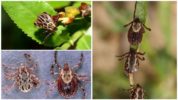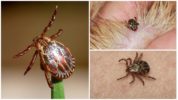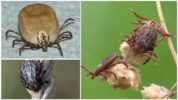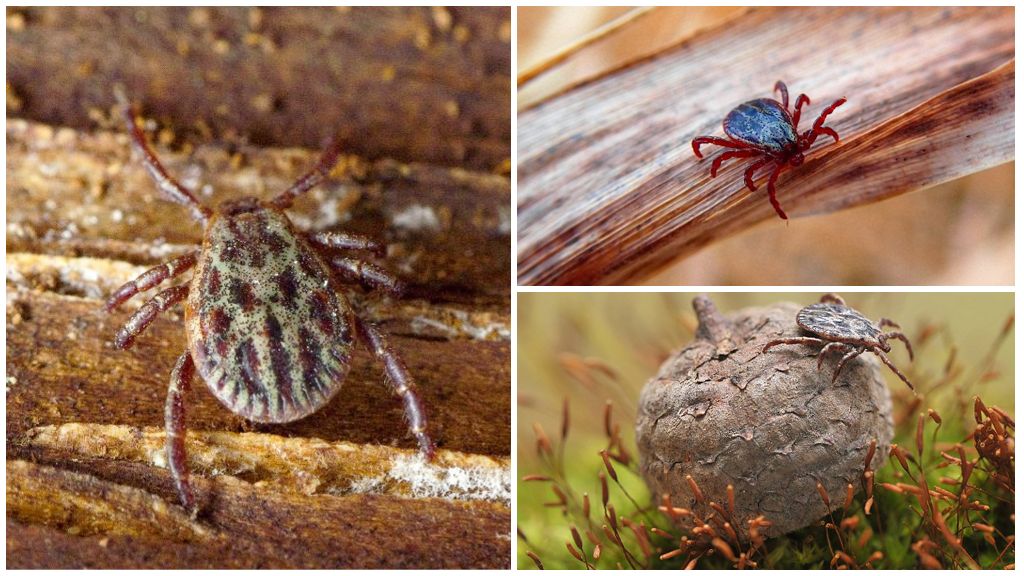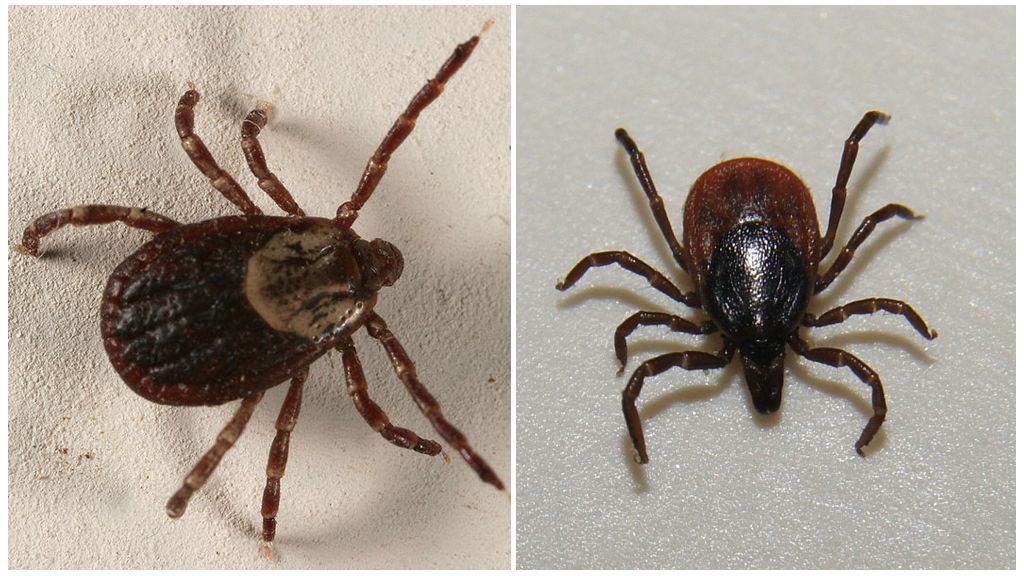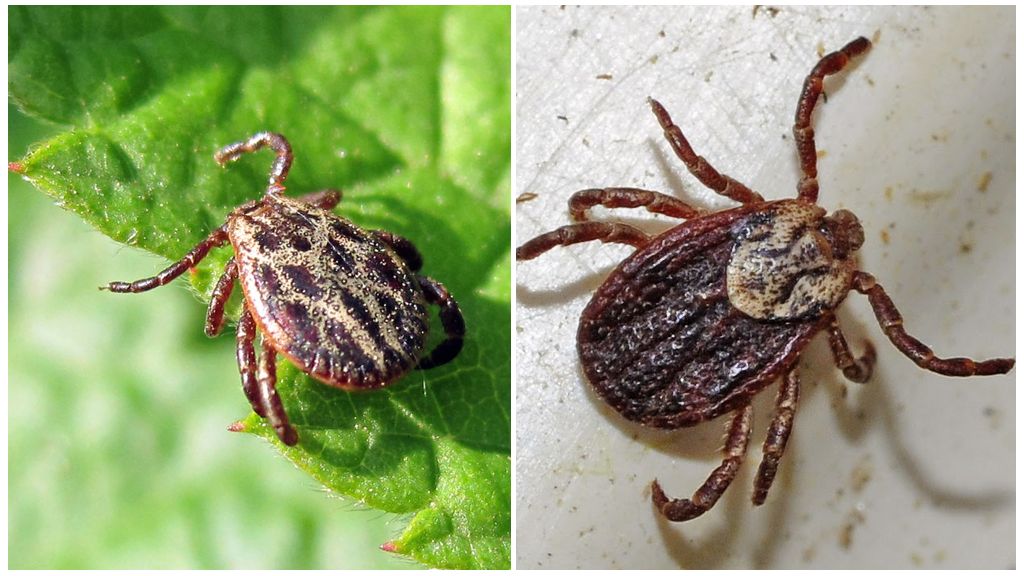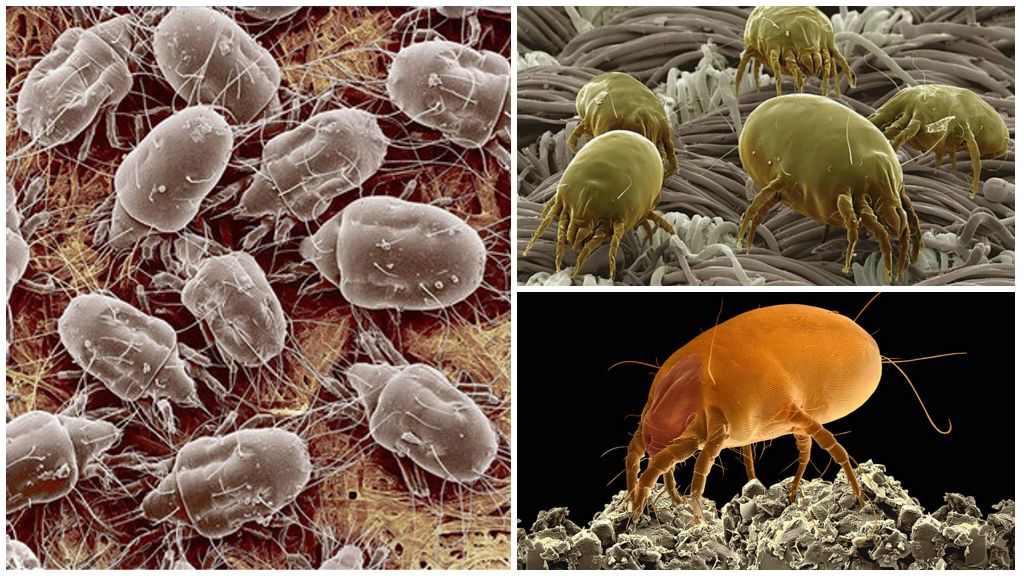- Meadow tick
- Meadow tick
- Meadow tick
Meadow tick - a representative of the genus Dermacentor. Most species of this genus have developed on the North American continent. But representatives of this genus are not only in America. Dermacenters distributed around the globe, but such a rich species composition, as in North America, is no longer anywhere. In Russia, there are two species: meadow and pasture. Lugovoi lives in moist biotopes of Central Russia. Grazing prefers the steppes of the southern regions.
Appearance
The body is ovoid, flat. The male has a sharper front end than the female. The back of the male is completely covered with a hard shield. In the female, the shield covers only the front third of the body. The color is red-brown. In the male, the entire shield is covered with an abundant light pattern. From under the white pattern, the main background of the shield is almost not visible. The female has patterns only on the flap. The outer edge of the flap is red-orange. Abdomen plain brown. Paws are brown with white transverse stripes. In the photo of a meadow tick, this difference in the coloring of adult individuals is clearly visible.
A couple of additional names dermacenter reticulatos owes its coloring:
- patterned brown;
- patterned dog;
- marsh.
These names more accurately reflect the appearance and habitat of the meadow tick.
Morphology
The meadow tick is morphologically very similar to the ixodid tick canine. The body size of meadows in a hungry state is the same as that of ixodids: about 5 mm. A well-fed female swells up to 16 mm in length, exceeding the size of a European canine ixoda. Male meadow ticks are slightly smaller than females in a hungry state and do not increase in sizes after eating.
The body of the meadow tick has 3 sections: head, chest and abdomen. The last two are fused together. On the head of the bloodsucker is a piercing-sucking mouth apparatus. Paw 8. The first pair is long, slightly bent at the ends for the convenience of capturing the victim.

Interesting!
On the sides of the shield there are a pair of organs that replace the eyes. These organs respond to infrared radiation.
Internal structure
The nervous system is primitive. It is a tube passing under the upper flap from the head to the posterior end of the parasite. It has 3 thickenings-ganglion: pharyngeal, submaryngeal and abdominal. 22 nerve endings go away from the central axis, which control the work of internal organs, paws and proboscis.
The digestive system also does not have a complex structure. The mouth opening leads to the pharynx, the muscles of which work like a pump when feeding an arthropod. The ducts of the salivary glands open in the throat. When feeding, a meadow tick injects anesthetizing saliva into the tissue of a victim. The pharynx passes into the esophagus, which opens the intestine. 12 blind processes depart from the intestine; when feeding the tick, they fill with blood. The intestine passes into the rectal bladder, which ends through the posterior intestine with the anus.
On a note!
There are no lungs in the meadow tick. By the structure of the respiratory system, it is closer to insects than to animals. The parasite receives air through the trachea, the openings of which open near the hind legs.
Habitat
Meadow tick - an inhabitant of deciduous and mixed forests of Siberia and Europe. Since this species is very morphologically similar to a pasture tick, they are confused. Sometimes, summarizing, they call both species herbal mites.This name is more suitable for pasture, which prefers to live in dry steppe biotopes with grassy vegetation.
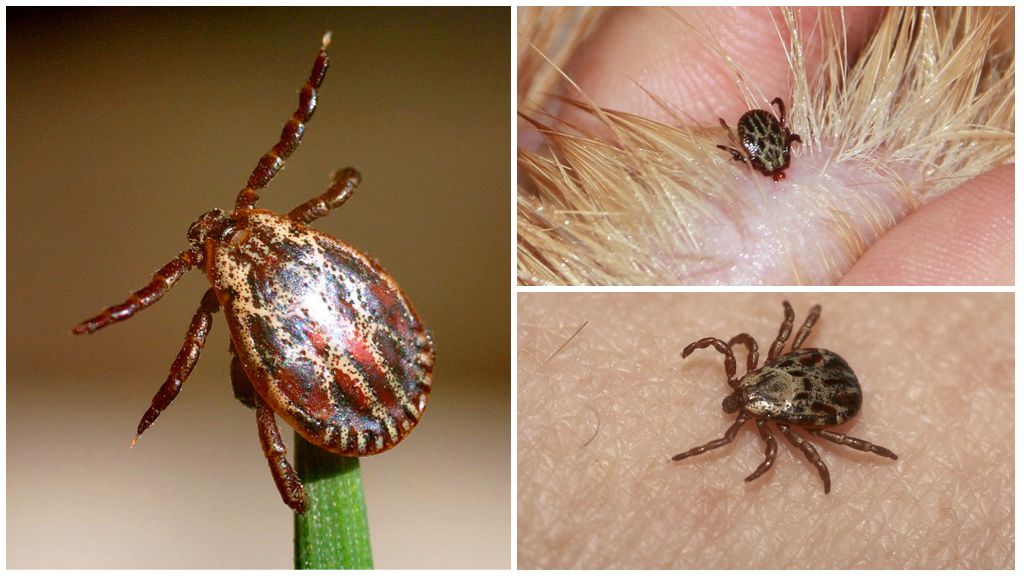
Lugovoi has one of the additional names: swamp. This name clearly indicates the habitat preferred by the parasite:
- flood meadows;
- edge of deciduous forest;
- forest glades.
The meadow tick lives on pastures. Able to tolerate spring floods. In places of cattle grazing, mass reproduction of the reticulatus dermacenter is observed.
Lifestyle
The activity of meadow ticks begins earlier than that of canine ticks. It is the dermacenters that can attack at a time when thawed spots have just appeared on the ground. The peak of their activity falls on April-May. The second, smaller peak of activity in this species is observed in autumn.
The life cycle of a meadow tick from an egg to death lasts 1-2 years. The development of an arthropod from an egg to an unfertilized adult should take 1 vegetative period. Hibernate adult ticks.
Egg laying occurs only in the spring. The cycles of transformation from larvae into nymphs and then into adult meadow ticks are short. The peak activity of these forms occurs in July and August.
On a note!
This species is able to wait for its prey, climbing to a height of 1.5 m. The activity of sexually mature ticks is interrupted only with the onset of cold weather. Adults leave for wintering.
Young growth parasitizes on small mammals. Ultimate parasite hosts:
- sheeps;
- goats
- horses;
- cows
- dogs;
- wild boars;
- deer
- foxes;
- jackals.
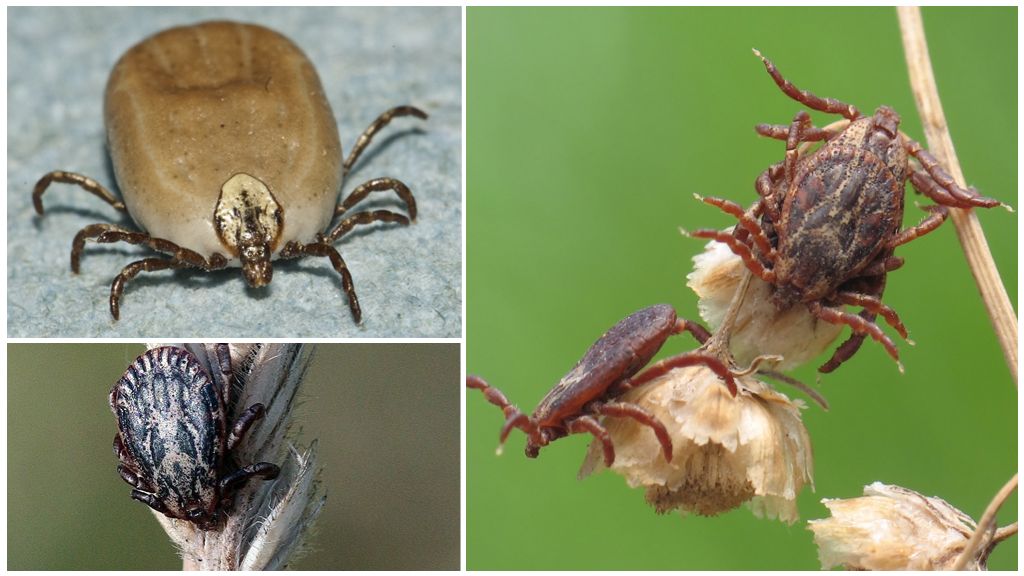
An adult meadow tick can be dangerous to humans due to the food cravings of young forms.
On a note!
The basis of the diet in nymphs and larvae are mouse-like rodents.
Mite ticks mate on the host. Before this, the female should drink blood for 8 days. Having sucked, she needs to have time to mate within 3 days. After that, she falls to the ground and lays 3-5 thousand eggs.
Although the meadow prefers damp places, it can successfully compete with pasture mites in drier biotopes due to the ability of larvae to wait for hot and dry time, buried in the soil. In fact, herbal mites succeed each other during the warm season. Meadow larvae “leave” the soil in moist layers from May to August. Young pasture at this time leads an active lifestyle.
On a note!
In the marshland, the larvae of the meadow dermacenter are active throughout the summer.
Tolerable diseases
Dermocentres belong to the same family as ixodic taiga and European dog ticks. The areas of these bloodsuckers overlap. The type of food they have is also similar. Arthropods parasitize on several hosts throughout their lives. Therefore, both types of dermacenters tolerate the same diseases as ixodic. Both meadow and pasture can infect:
- rickettsiosis;
- pyroplasmosis;
- tick-borne encephalitis;
- babesiosis;
- Astrakhan spotted fever;
- Q-fever (she's the Rocky Mountain spotted fever).
In addition to infections, meadow and pasture ticks can transmit simple parasites.
